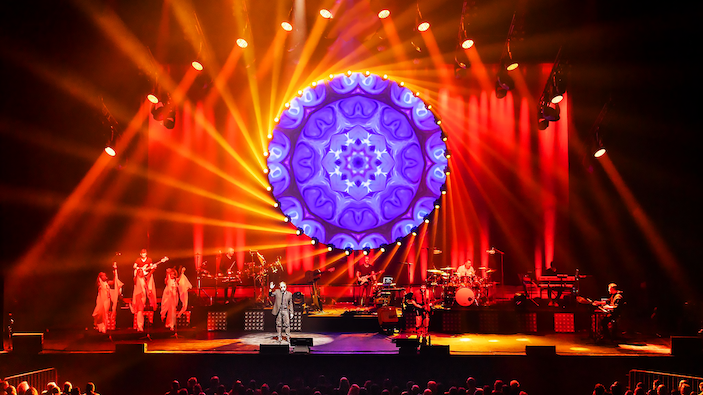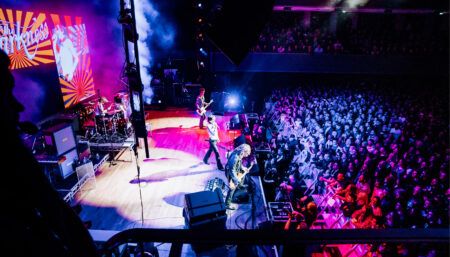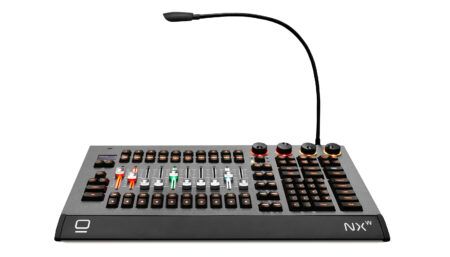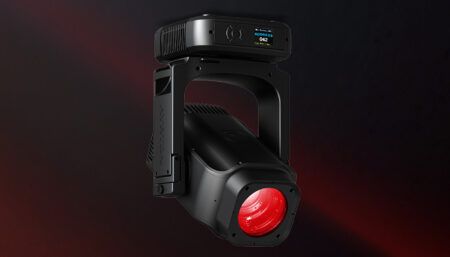Naostage K System, an automatic, beacon-less 3D tracking system for live events and interactive experiences, was the cornerstone of the lighting effects on a recent live tour by So Floyd, a popular Pink Floyd tribute act.
Created by Fabrice Di Maggio, So Floyd’s musical director, and Laurent Begnis, technical director of local hire company Pan Pot, the five-part show immerses audiences in the musical universe of the iconic progressive rock band, starting with the post-1986 David Gilmour years and then travelling back in time through albums including The Wall, Wish You Were Here and The Dark Side of the Moon. Enhancing So Floyd’s music is a mesmerising AVL show.
For So Floyd’s most recent concert tour, comprising 17 dates in France, the band’s technical team used Naostage K System to automatically trigger lighting cues.
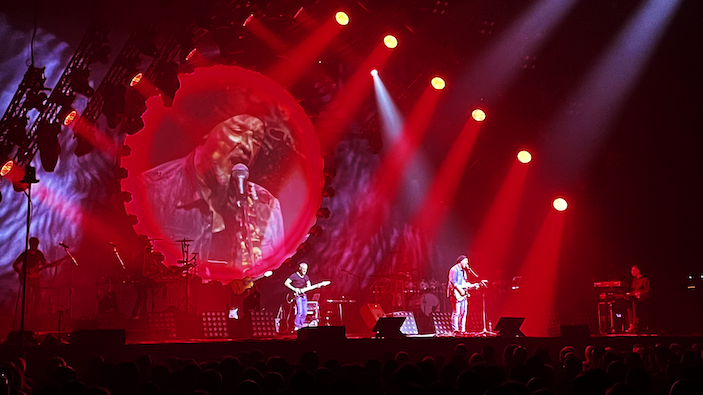
“K System was ideal for automatic head-on tracking,” said Begnis, who also served as the tour’s lighting designer and operator, accompanied by lighting, network and tracking manager Sébastien Huan. “We used six Robe Esprite spotlights rigged above the stage to light up to four people at the same time; depending on the scene, we were also able to ask a specific spotlight to follow an individual performer. Using a single system, we were able to map the entire stage and truck all five musicians, as well as the three-person choir.”
For the tour – which began in February and concluded at the Zénith arena in Orléans in May, attracting more than 100,000 Pink Floyd fans – Naostage supplied Pan Pot with one Kapta sensor and one Kore server. Kapta, the ‘eyes’ of K System, is a plug-and-play sensor that delivers a stereoscopic, 3D view of the performance area (up to 20m × 12m with a single device). Kore, a 4RU server that uses AI to detect and track performers, is complemented by Naostage’s Kratos software, which handles the patching to external devices such as consoles (a grandMA2 in Begnis’s case) and media servers.
Paul Cales, Naostage’s founder and CEO, explained why the beacon-less K System was a natural choice for the So Floyd tour: “The band and choir change their outfit regularly, and the guitarist even comes back on stage with the lightbulb suit at some point, so a beacon was out of the question for this show.”
“Another advantage is that the artists don’t have to carry anything with them, which is great because you don’t have to be afraid of forgetting to give someone their case before they go on stage,” added Begnis.
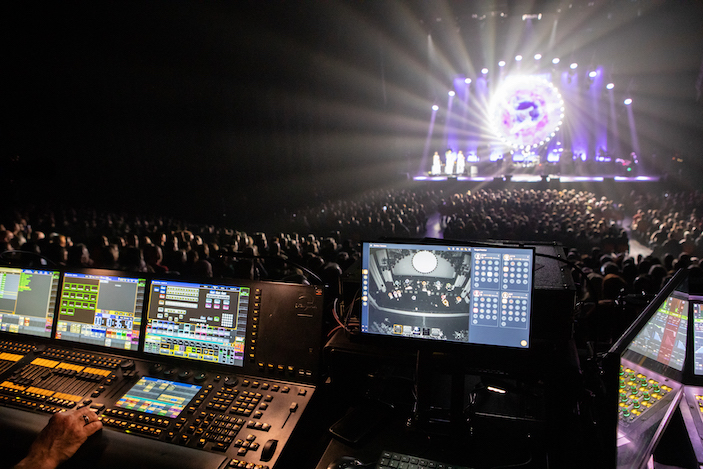
In live show mode, K System is able to track up to 16 people on stage simultaneously with a single server – more than enough capacity for the average live event.
All events can benefit from the automatic triggering of AVL effects, suggested Cales: “Even though these are jobs that require real know-how, there is an urgent need to automate the methods in order to make substantial savings in budgets, and to enable technicians to unleash their creativity elsewhere.”
“K System integrated very quickly and easily into the tour’s existing ecosystem,” Begnis said. “We just had to add a few parameters and make a few adjustments on the console to interface with it and the system was incorporated. In terms of hardware, the sensor was easily integrated into the stage and we installed the server backstage. It was also delivered in a wheeled rack that included all the hardware needed to operate it: touchscreen, keyboard, mouse, etc.”
Following the success of their spring tour, So Floyd are heading back on the road on 16 November with another 17-date trek – this time also including a date in Belgium (at the Forest National arena in Brussels) in January 2024.
Begnis said he is already planning how to incorporate K System into future Pan Pot tours. “It’s a brilliant system, and it saves us a considerable amount of time,” he concluded. “It’s fast and precise – plus the software is very intuitive, making it easy to target performers. It’s worry free, and it doesn’t take up any space, both on the rig and between show dates. We’d love to use K System again.”


